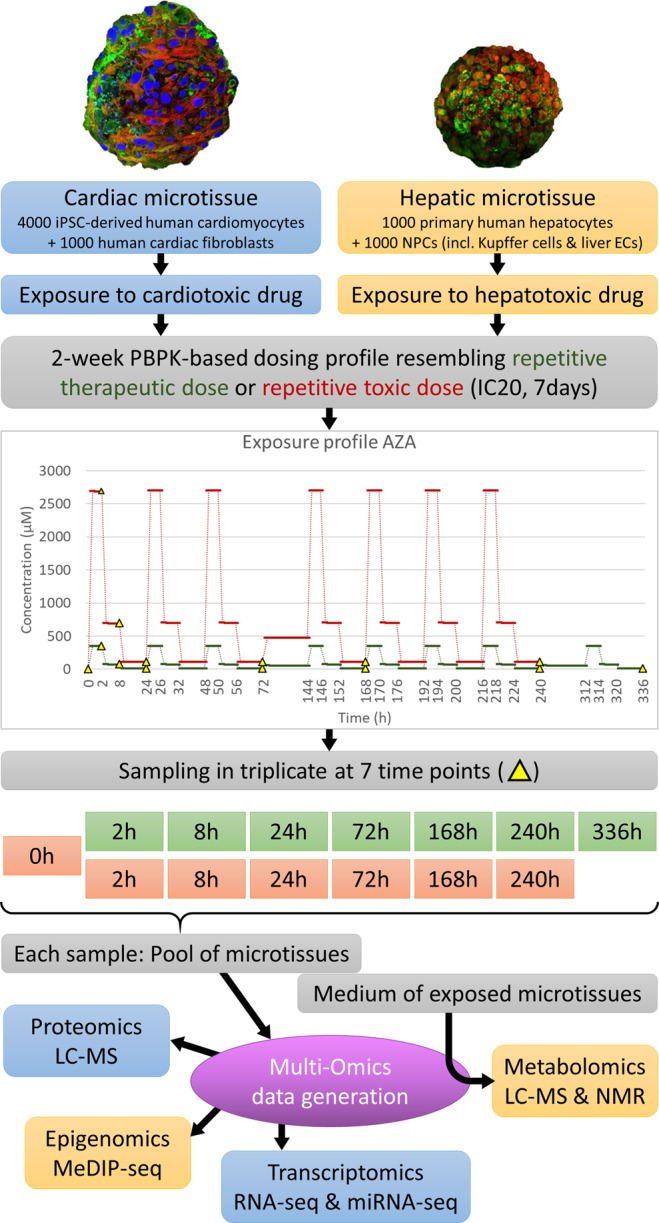Fig. 1.

Overview of experimental design. The in vitro experimental design of the HeCaToS project made use of 3D cell models called microtissues for the assessment of repeated dose toxicity. PBPK-modeling was used to obtain dosing profiles resembling the repetitive administration (1x daily) of either a therapeutic or a toxic dose of the investigated compound. In the experimental design, this dosing profile was realized through three medium changes per workday (high dose for 2 hours, medium dose for 6 hours and low dose for 16 hours). During weekends (72h–144h and 240h–312h) the microtissues were exposed to a calculated average concentration without medium refreshment. The 14-day exposure profile included 7 sampling time points: 2-8-24-72-168-240-336 h for therapeutic doses (green) and 0-2-8-24-72-168-240 h for toxic doses (orange), though the 0 h baseline sample can be applied for both doses. For each sample, multiple microtissues were pooled before isolation of DNA, RNA and proteins, which were analyzed with epigenomics, transcriptomics and proteomics techniques respectively. The medium of the exposed microtissues was used for metabolomics analysis.
